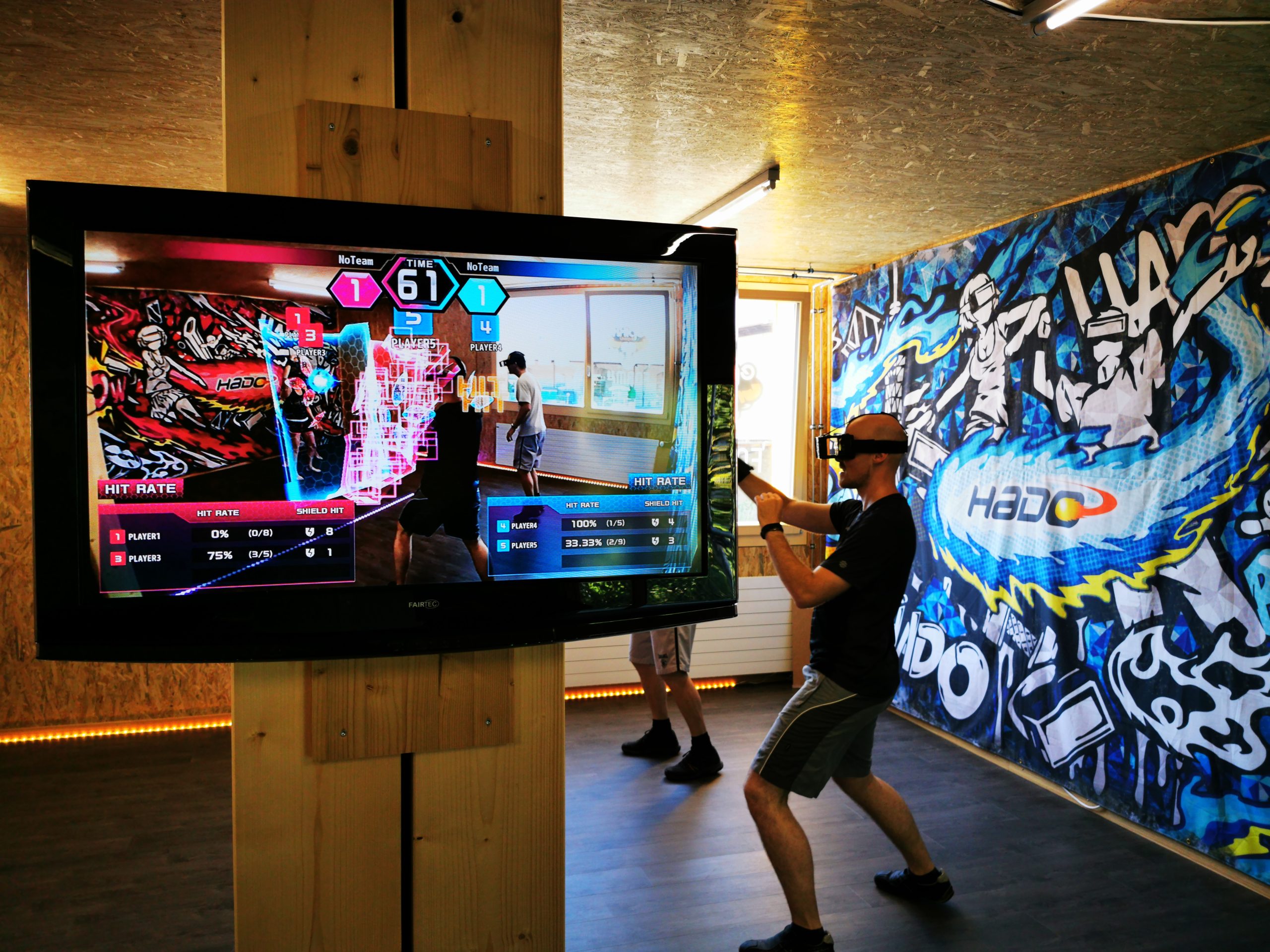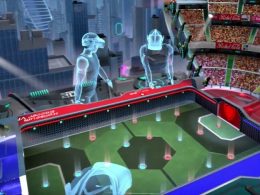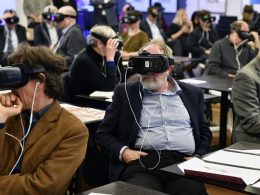Four of us were allowed to test the digital dodgeball game Hado in St. Gallen. Since the day before yesterday, you've been wondering how and, above all, whether we did.
After purposefully arriving by car at the goods station site in St. Gallen and spotting a sticker with Digital Sports Dojo on a window further up, we initially looked around a little perplexed: Where is the entrance to this wooden building? After one daring person ventured around the building, we quickly found what we were looking for.
As soon as we arrived at the top, Remo and Wilko asked if we wanted to get started. We quickly threw on our sports outfits, which the two of them thought was funny. But it's called "Sport Dojo" and we all know by now that you always sweat under VR goggles anyway. The two teams of two were quickly formed and we were given brief instructions about the game, one in German and one in English. At the same time, we also picked up our equipment, which consisted solely of the goggles with a standard iPhone and a motion sensor with a screen, which we wore on our wrists.
The game with tactics
Thanks to individual customisation options, we were able to make tactical changes to our playing style before the matches. We were able to influence four different factors: Size of the balls, their speed, loading time for shots and strength of the shields. We had 6 points for this, which we could distribute among the four factors each time. This gives the AR tournament a more tactically challenging component.
Remo advised us that it would be best if we worked together as a team and used at least a few points for the loading time and the strength of the signs. No sooner said than done and off we went!
Despite the instructions, not everything was quite so clear during the first few games. Where can you see how strong the protective shield still is? Why are no balls coming? Why can I no longer raise a shield? And in the blink of an eye, the first round was already over. 60 seconds are quickly over, but despite many uncertainties, it was fun.
A few more questions were patiently clarified. This was repeated in the same style for a few more rounds. It's not quite that simple after all. We also had to deal with a few technical problems. But after a while we had it under control and with it came the fun and, for some, the sweat.
Right in the middle of the fr**
I didn't find the game very strenuous myself. But I'm also convinced that we could all have moved even more if you look at the video clips from Japan. One factor that prevented us from doing so was the space. Although the Digital Sports Dojo in the Lattichbau is relatively large, a larger playing field wouldn't have hurt. In the end, I even felt this with a hand from my friend and team-mate. In all the hustle and bustle and with my field of vision restricted by my glasses, I was hit right in the face. At least we didn't leave any traces of blood in the dojo.
In the subsequent conversation, this was one of the many questions: Have there been any injuries? "Not so far. The advantage of the AR game is that you don't need any trip hazards such as cables or a heavy rucksack. Tracking is done via the cloths on the walls. So there's nothing in the way," says Remo.
Ideal for team events
This is also one of the reasons why Hado is also suitable for team events, trade fairs or events. All you need is a frame to stretch the cloths and some space, says Remo. They have already been a popular attraction at various trade fairs.
The conclusion
Definitely a cool idea for a team event. However, it takes some time to get used to and the technical problems definitely need to be fixed. It would be great if you could choose from several "weapons". After the experience, we were not so sure whether we would spend CHF 45 per player for 60 minutes of game time, even though everyone had fun!









